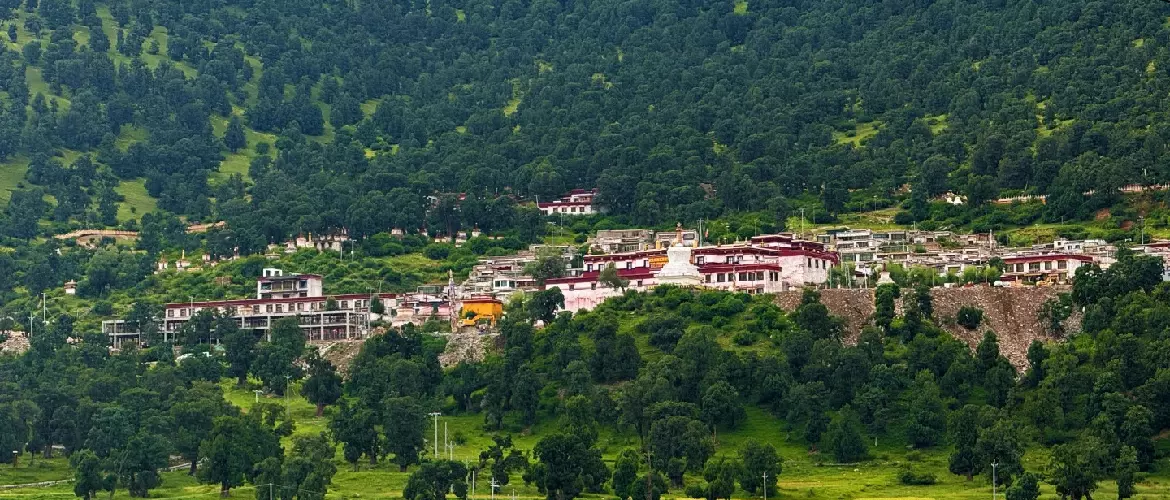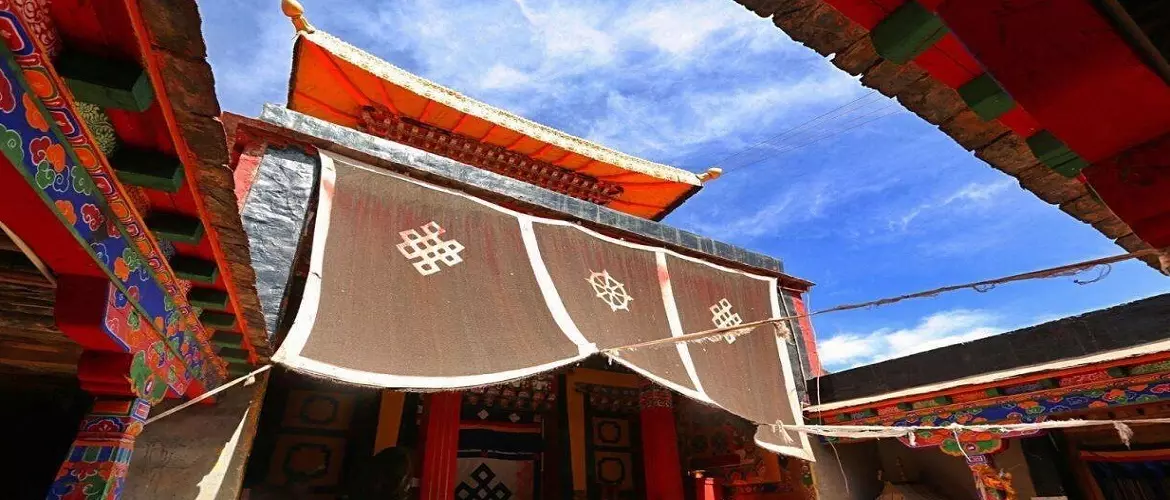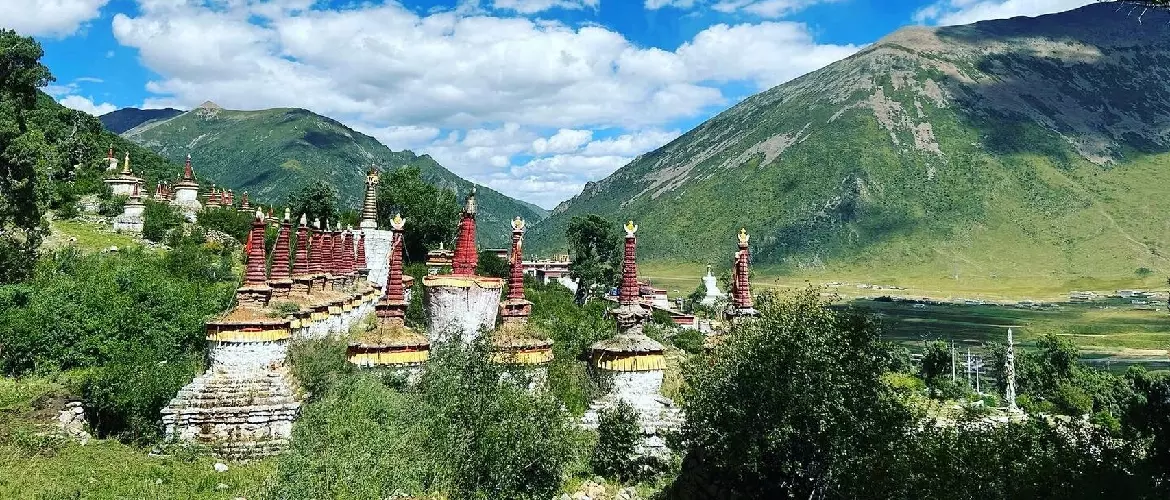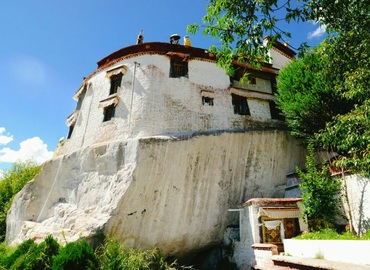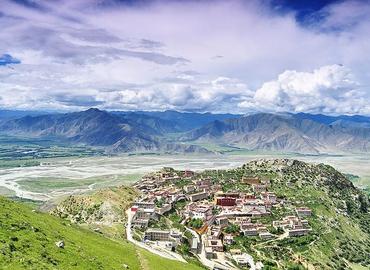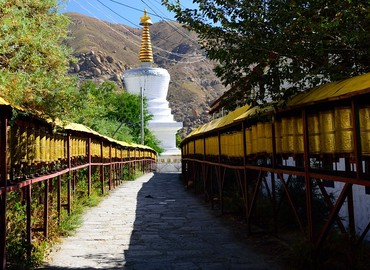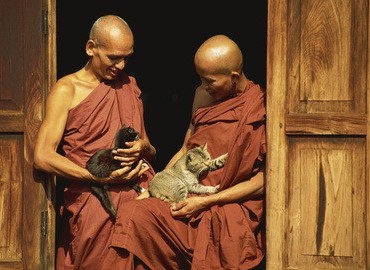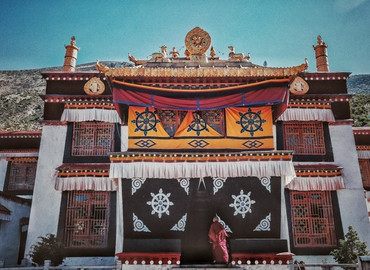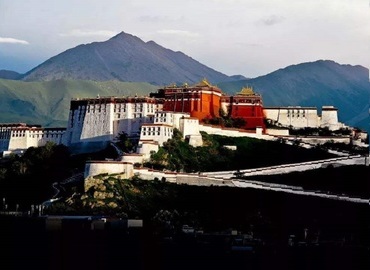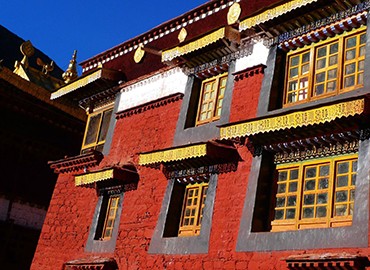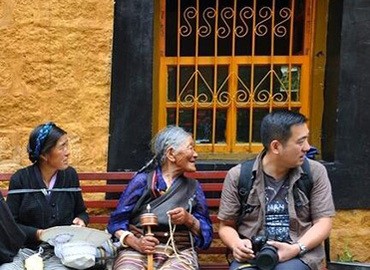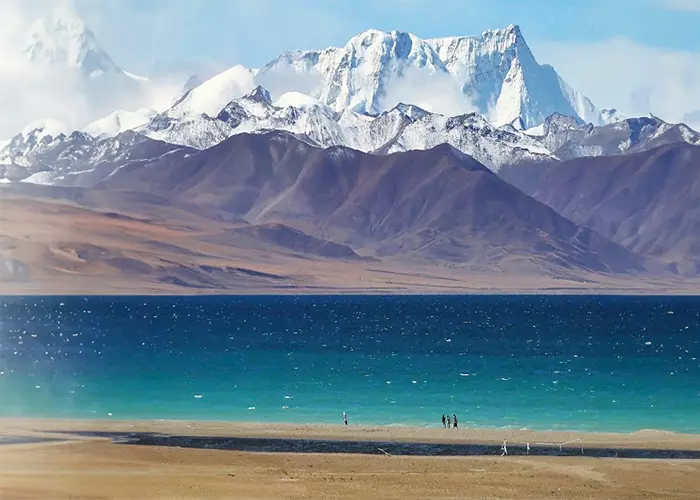Reting Monastery (热振寺) is located in Tanggu township, Linzhou county, 155 kilometers north of Lhasa. Reting means eradicating all worries and continuing until transcending the three realms of reincarnation. It's the seat of Reting Rinpoche. As the first monastery of the Kadam Sect in Tibetan Buddhism, with a history of more than 900 years, Reting Monastery was founded in 1057 by Dromtön, who's also the founder of the Kadam school.
According to legend, there used to be a bare mountain with no vegetation. Later, King Songtsen Gampo of Tibet visited here, sprinkled his hair-washing water on the hillside, and prayed for blessings, so thousands of green cypress trees grew. Right now, there are 25,000 ancient cypress trees around the temple, more than a thousand years old.
History & Reting Rinpoche
About a thousand years ago, the eminent Indian monk Atisha came to Tibet to preach Dharma, and later passed away in Dolma Lakhang near the current Lhasa Gonggar Airport. In 1057, the master's first disciple, Dromtönpa, brought some of the master's ashes to the location of Reting Monastery and established the temple. He practiced and taught here for a long time until his death, and later, he developed the Kadam Sect lineage, which had a profound influence on all major sects.
At the beginning of the 15th century, it was converted to Gelug Sect and belonged to Sera Monastery. In the 16th century, Gelug’s living Buddha system was established. Reting Khenpo started to be inherited by the reincarnated Rinpoche.
Reting Rinpoche has a very high authority and reputation in Tibetan Buddhism. In history, Reting Rinpoche was canonized as Tulku by the Qing Dynasty and was also one of the six living Buddha lineages who served as regent. They are eligible to act as a regent of Tibet before the Dalai Lama takes over the reins of government upon coming of age. According to the monastery records, the living Buddha was reincarnated in the seventh life.
What to See at Reting Monastery
The Guhyasamāja vajra Buddha statue enshrined in Tsochen Hall is the original statue of Atisha. Legend has it that this statue was made by Manjushri Bodhisattva, which makes people awe-inspiring. It is said that the main pillar of the hall was dedicated by the Dragon King with gold and jade pillars during its construction. In addition, this hall displays two magical stones: one is a natural figure of Avalokitesvara, and the other is a self-evident mantra of Avalokitesvara.
PabangTang is the holy path in the hearts of monks and laypeople, carrying countless prayers and hopes. "Pabang" means huge stone, and "Tang" means lawn or dam.
Every year on July 15th in the Tibetan calendar, the Reting Monastery holds the Pabang Tangkor Festival. According to folklore, on that day, 100,000 goddesses, headed by the Dakini, descend to earth and set up an altar here to gather to expiate the sins of all beings. On this day, faithful men and women from all over the world gather here to offer various offerings, chant sutras and pray for peace and prosperity. The Cham Dance at this monastery is held every twelve years in the Year of the Sheep, during the Tibetan Pabang Tangkor Festival. The next time will be July 15 in the Tibetan calendar in 2025.
How to Get to Reting Monastery
Reting Monastery is 155 km away from Lhasa and it takes 4.5 hours by car. Along the way, the scenery is beautiful. The driver would usually stop to let you take photos. Our suggested itinerary is a 2-day tour. On the first day, you can visit Namtso Lake, a scenic spot, and then stay overnight in Damxung. The next day, before returning to Lhasa, we can drive you from Damxung to Reting Monastery. The monastery opens at 07:00-19:00.
Lhasa - Namtso - Tsetang - Lhasa
Wander legendary Buddhist monasteries, enjoy heavenly Lake Namtso, and explore the fabled birthplace of Tibetans.
Email response within 0.5~24 hours.


